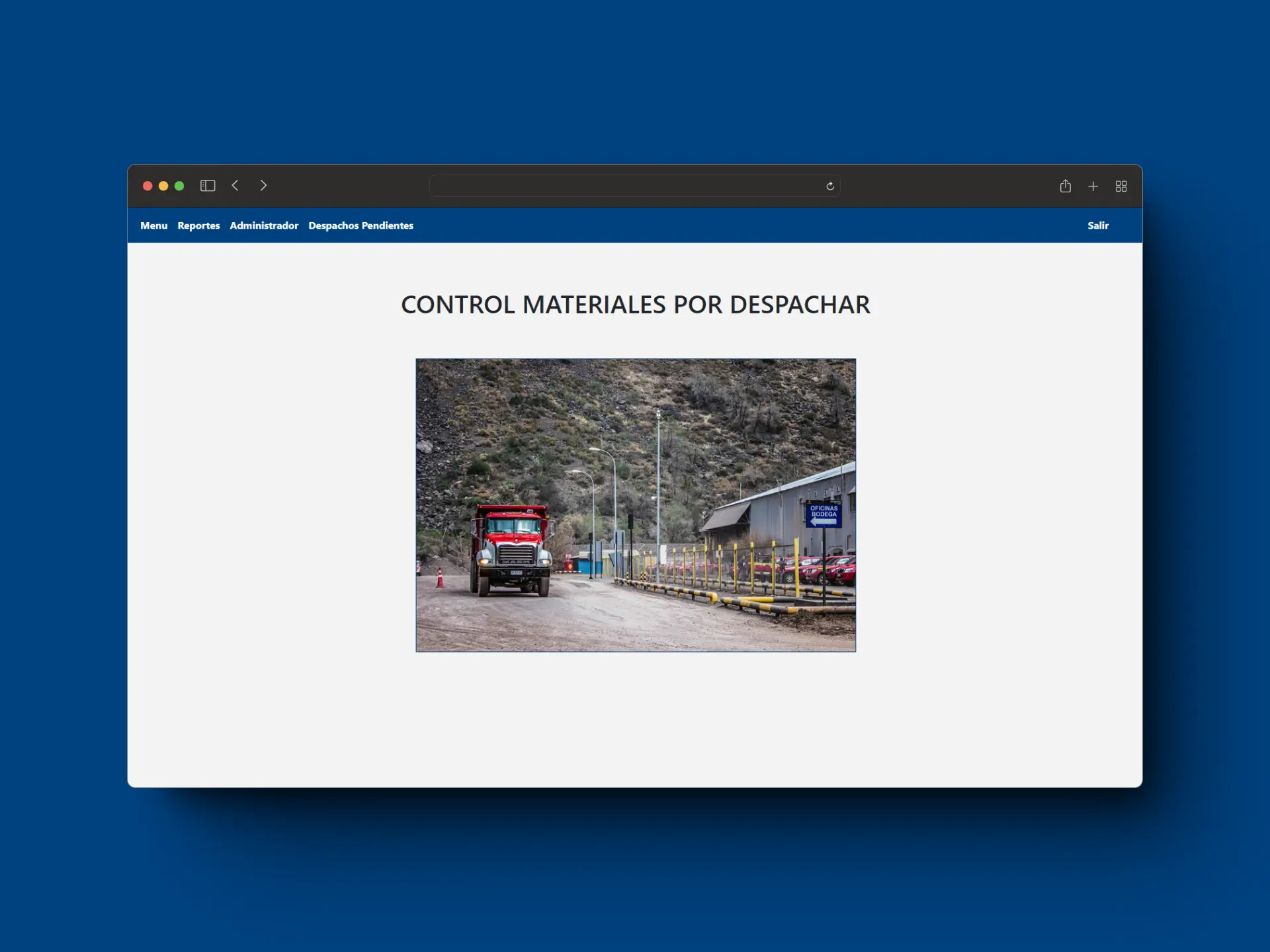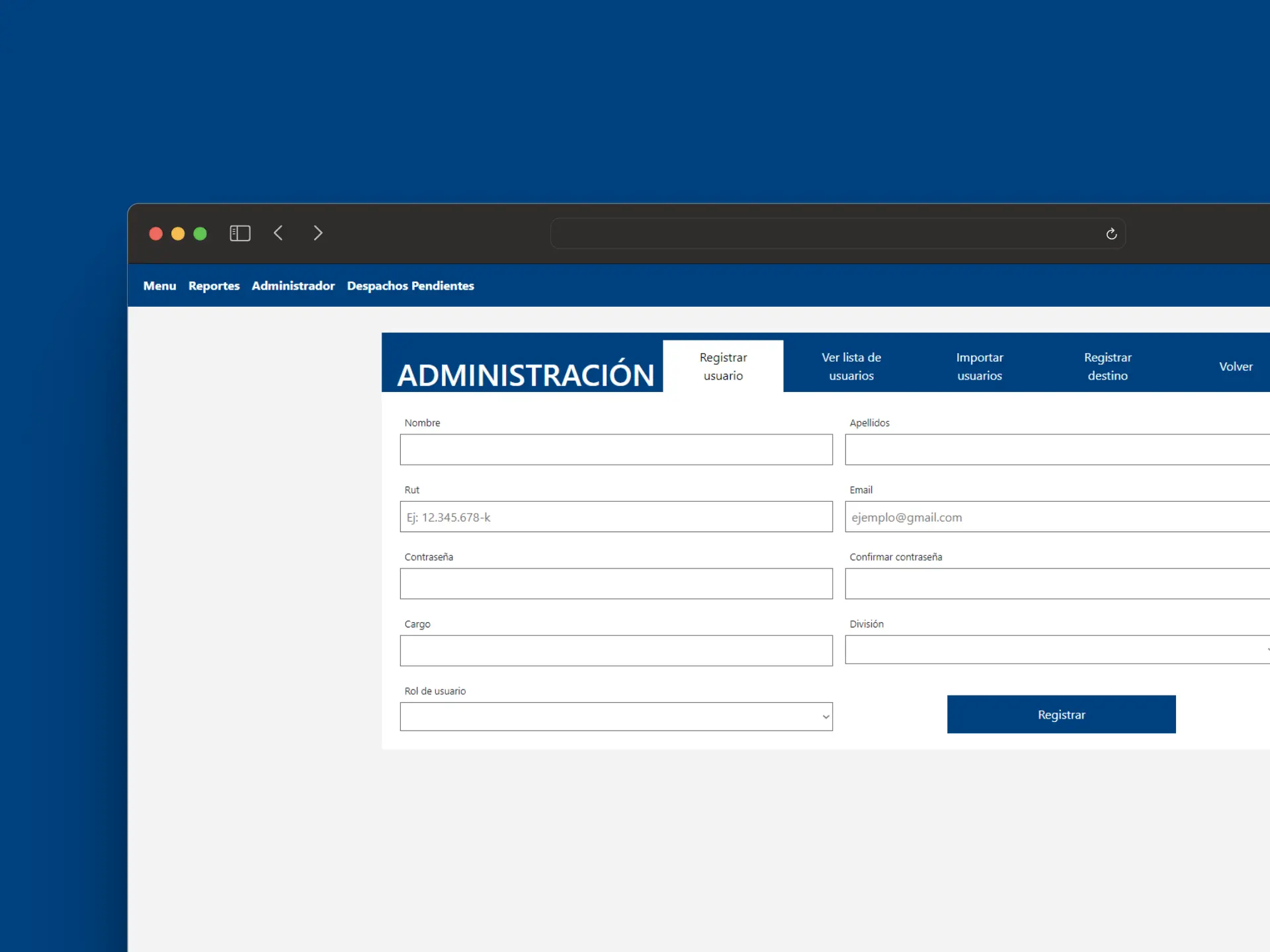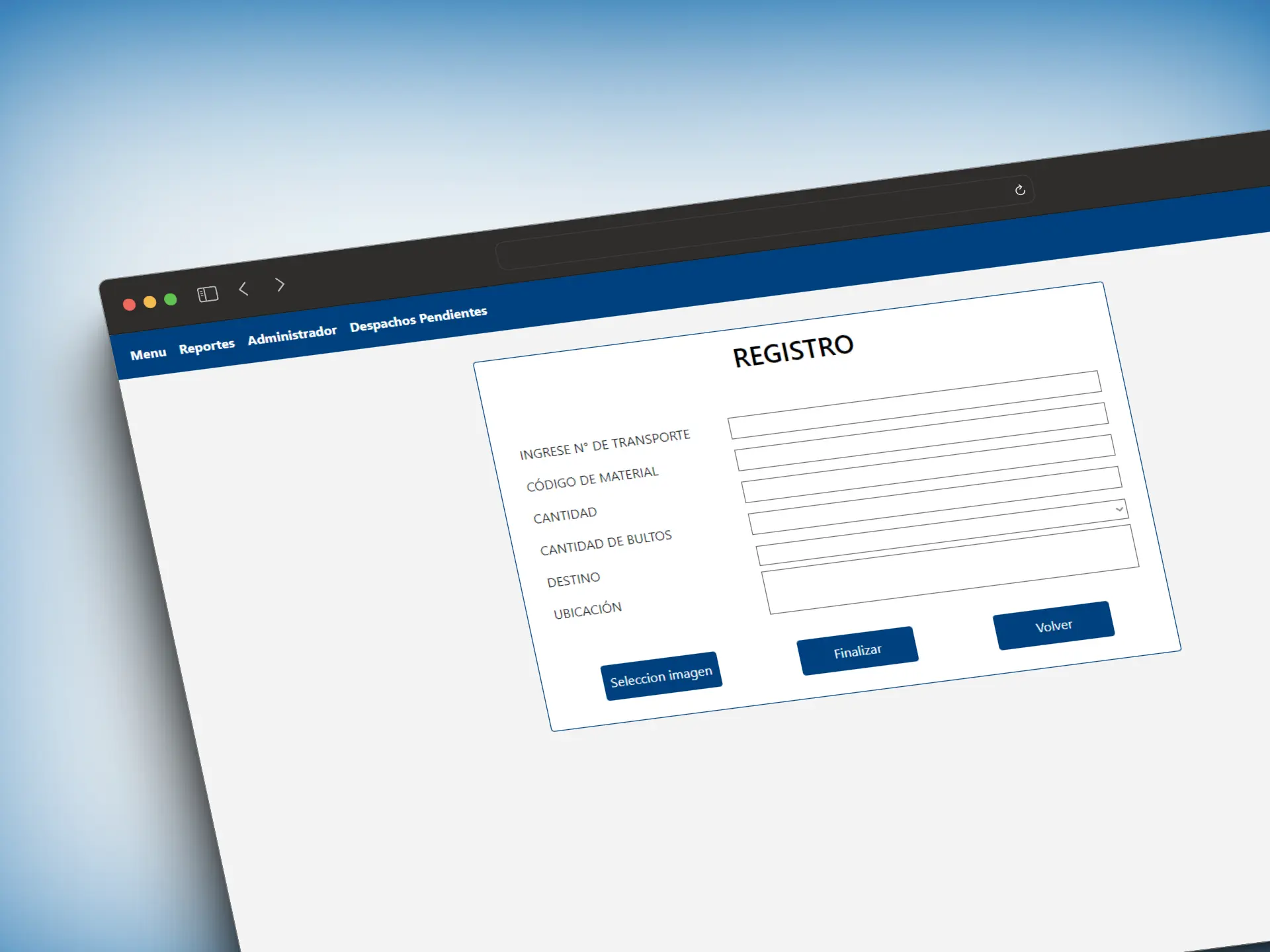Web Application - Cargo Control
BackI developed a custom web application for Servicios Integrales Cacciuttolo aimed at effectively addressing challenges related to the movement of goods among its various warehouses. The company faced significant issues, including high expenses and unnecessary costs due to poor logistics management when storing materials and loads.

In the development of my second web application for Servicios Integrales Cacciuttolo, I leveraged the knowledge gained from previous projects and applied my self-taught training for its creation. This platform enables access for collaborators who have been pre-registered by the administrator, allowing them to efficiently carry out registrations and reviews.
Each user is assigned a specific role that dictates their functions within the application, aligning with their assigned responsibilities. These roles have been carefully crafted to optimize system productivity and security. Some of the key functions encompassed by these responsibilities include:
- Record the materials that will change location or will be received.
- Oversee the accurate registration of materials.
- Review graphics and reports.
- Administrator in charge of user registration and having access to most of the application's functions.
User registration can be done either individually or through a bulk import using a CSV file.

To explain the functioning of the application, users responsible for handling the movement of packages or materials must register the vehicle's transport number, code, quantity of materials, and how many packages they are divided into. They also need to specify the destination where they will be stored and their location within it. Additionally, they must attach an image of the material(s), which is stored in the Cloudinary service. Users with different roles follow other processes, such as transportation tracking and storage.

For the implementation of this project, I chose to use Vue.js along with technologies from its ecosystem, such as Vuex for managing the application state and Vue Router for view routing, achieving the construction of a Single Page Application (SPA) with JavaScript on the frontend. Additionally, I incorporated various libraries like SweetAlert2 for notifications and Chart.js for graphics. The project architecture is divided into modules, each of which contains layouts, views, components, composables, and utilities used in a specific manner. Each element serves a clear function in the development of the system.
For the backend, I utilized the Express.js framework along with JavaScript. I also made use of several libraries for different functionalities, including password encryption for data security, generating JSON Web Tokens (JWT) for user authentication, automatically sending emails to those responsible for material tracking upon registration, reading CSV files, connecting to the database, among others.
For data storage, a pre-existing MariaDB database within the company was utilized. A secure connection was established with the backend, enabling communication with the hosting platform where the database resides. The backend was deployed on a cloud services platform (PaaS, Platform as a Service). Authentication with the database, email credentials, and Cloudinary authorization data are managed through Environment Variables.